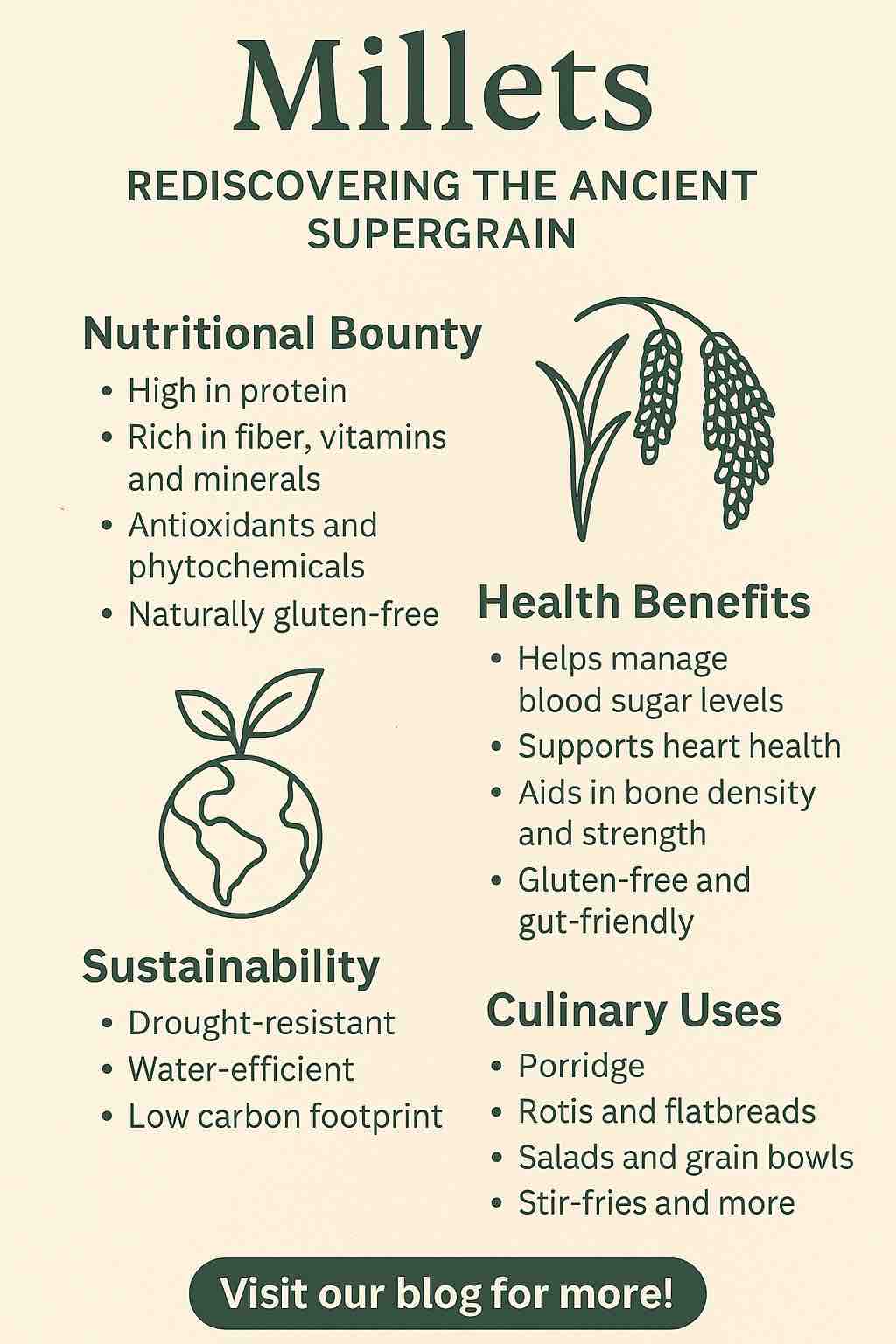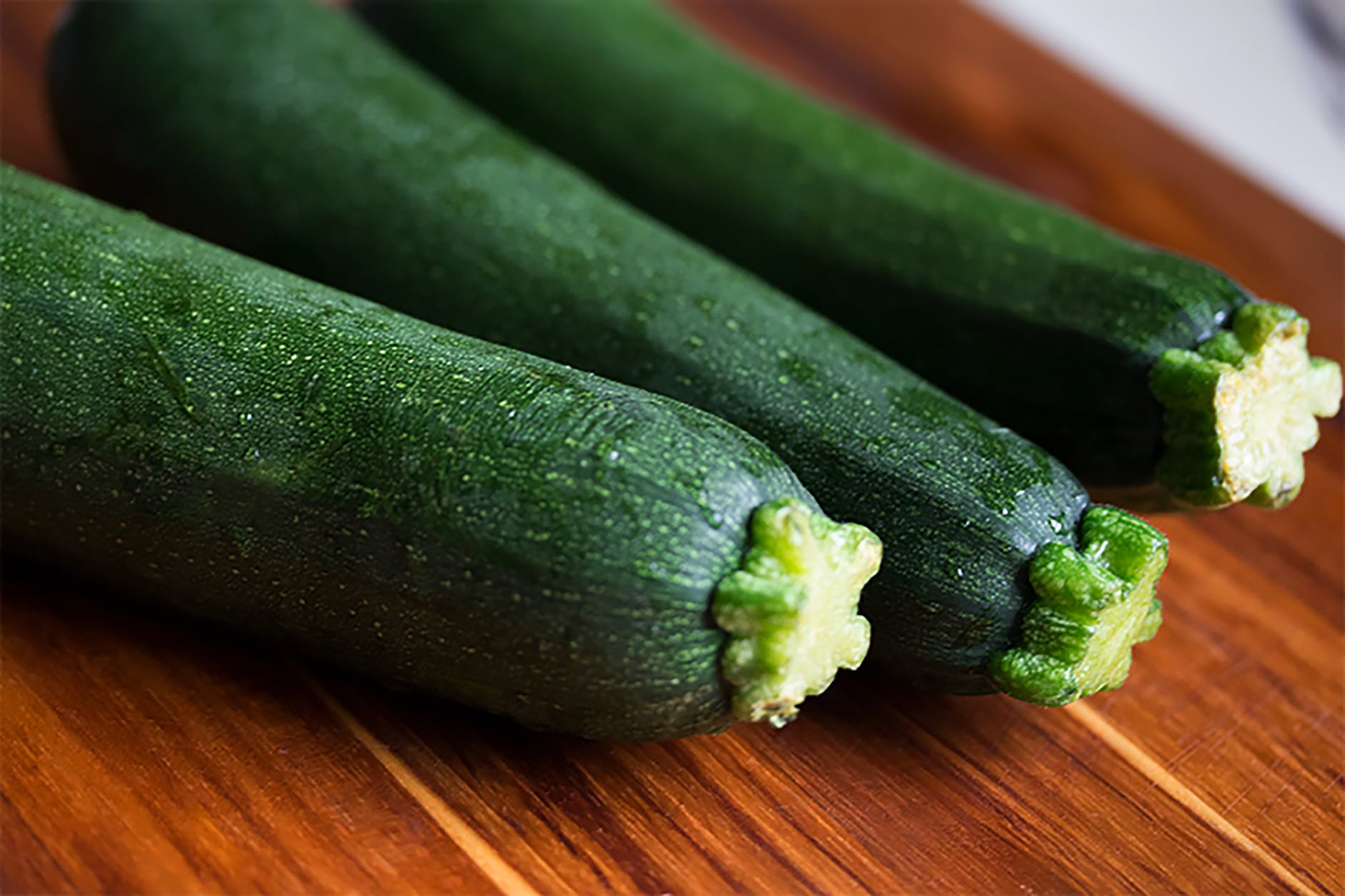
In a world increasingly plagued by lifestyle diseases, food intolerances, and climate instability, an ancient grain is quietly making its way back into our kitchens—and onto our plates. Millets, once relegated to the margins of agriculture and diets, are now being hailed as superfoods for the future. With their impressive nutritional profile, natural resilience, and culinary versatility, millets are not just good for your body—they’re good for the planet.
This isn’t just a dietary trend—it’s a global movement. From the United Nations declaring 2023 as the International Year of Millets, to nutritionists and chefs spotlighting them on social media and menus alike, millets are having a moment—and it’s well deserved.
🧬 Section 1: The Nutritional Bounty of Millets
Millets are small-seeded grains from the Poaceae family, cultivated in Asia and Africa for thousands of years. What sets them apart nutritionally?
🔹 1. Packed with Macro and Micronutrients
- High Protein Content: Millets like foxtail and pearl millet are excellent plant-based protein sources.
- Rich in Minerals: They provide iron, calcium, magnesium, potassium, and phosphorus—critical for everything from blood production to muscle and bone function.
- Loaded with B Vitamins: Including niacin, riboflavin, folate, and thiamine, supporting brain function, energy metabolism, and cellular health.
🔹 2. Superior Dietary Fiber
Millets contain both soluble and insoluble fiber, aiding digestion, regulating blood sugar, and promoting heart health. Just 100 grams of finger millet (ragi) provides nearly 15-20% of daily fiber requirements.
🔹 3. Antioxidant & Phytochemical Powerhouse
They contain:
- Phenolic compounds: Anti-aging, anti-inflammatory, and cancer-preventive properties.
- Phytates & Lignans: Linked with reduced cholesterol and hormone-related cancers.
- Ferulic Acid & Catechins: Help neutralize free radicals and protect cellular integrity.
💡 Section 2: Health Benefits — Backed by Science
Millets are more than nutrient-rich—they’re disease-fighting powerhouses.
🩺 1. Blood Sugar Regulation
Due to their low glycemic index, millets slow glucose absorption—making them ideal for managing diabetes. Clinical studies show millet-based diets improve insulin sensitivity and reduce postprandial blood sugar spikes.
❤️ 2. Heart Health
- Soluble fiber in millets reduces LDL (bad) cholesterol.
- Magnesium relaxes blood vessels, improving blood flow and reducing blood pressure.
- Their anti-inflammatory properties help prevent atherosclerosis.
🧠 3. Mental and Cognitive Benefits
- Niacin and folate in millets support neurotransmitter function.
- Magnesium aids in mood stabilization and anxiety relief.
💪 4. Bone Density and Strength
Ragi (finger millet) provides 3x more calcium than milk—supporting bone development, especially in children and older adults.
🌾 5. Gluten-Free and Gut-Friendly
Perfect for those with celiac disease or gluten intolerance, millets are easy on the gut, non-allergenic, and don’t trigger inflammation like some processed flours.
🌿 Section 3: Millets and the Planet — A Sustainable Grain
Millets don’t just benefit people—they’re a climate-smart crop.
🔹 Water-Efficient
Require 70% less water than rice or wheat.
🔹 Drought-Resilient
Can thrive in poor soil and high temperatures, making them perfect for dry zones and small-scale farming.
🔹 Low Carbon Footprint
Minimal need for chemical fertilizers or pesticides, reducing greenhouse gas emissions.
🔹 Supports Agricultural Biodiversity
There are over 20 varieties of millet, helping preserve genetic diversity in a world dominated by mono-cropping.
🍽️ Section 4: Bringing Millets Into Your Daily Diet
Millets are remarkably versatile. Here’s how to add them to every meal:
☀️ Breakfast
- Ragi porridge with banana, cinnamon, and nuts
- Foxtail millet upma with veggies
- Millet pancakes using barnyard or little millet flour
🍱 Lunch
- Bajra or Jowar roti instead of wheat
- Millet grain bowls with lentils, greens, and tahini dressing
- Kodo millet khichdi with moong dal and ghee
🌆 Dinner
- Millet stir-fry with tofu and vegetables
- Biryani with barnyard millet instead of basmati rice
🍪 Snacks & Sweets
- Millet energy bars with seeds and dates
- Ragi ladoos or cookies sweetened with jaggery
- Millet puffs or crackers as healthy munchies
📚 Section 5: Popular Types of Millets and Their Benefits
| Millet | Nutritional Highlights | Best Uses |
|---|---|---|
| Ragi (Finger) | High calcium, iron, antioxidants | Porridge, dosa, cookies |
| Bajra (Pearl) | Iron-rich, cooling, great for winters | Rotis, bhakri, porridge |
| Foxtail | Low GI, protein-rich | Upma, rice substitute, salads |
| Barnyard | High fiber, low calorie | Fasting dishes, khichdi, pulao |
| Kodo | Gluten-free, good for heart and weight loss | Idli, pongal, salads |
| Little Millet | High in fiber and B vitamins | Upma, pongal, millet bowls |
| Sorghum (Jowar) | Great for gut health, lowers cholesterol | Rotis, flatbreads, muffins |
🔚 Conclusion: Why Millets Are the Future of Food
From nourishing your body to healing the planet, millets offer a complete package. They’re ancient grains with modern relevance, offering a sustainable solution to many of today’s health and environmental challenges.
So the next time you reach for rice or wheat, consider this: a small grain can make a big difference. Swap in millets a few times a week, and you might just unlock a healthier, more conscious lifestyle—one bowl at a time.
FAQs
1. What are millets and how are they different from other grains?
Millets are a group of small-seeded grasses cultivated for thousands of years. Unlike refined grains like white rice or wheat, millets are whole grains, gluten-free, and rich in fiber, protein, and essential minerals. They’re also more environmentally resilient.
2. Are millets suitable for people with gluten intolerance or celiac disease?
Yes, millets are naturally gluten-free, making them safe and highly suitable for individuals with celiac disease or gluten sensitivity.
3. Can diabetics eat millets?
Absolutely. Millets have a low glycemic index (GI), which means they release glucose slowly into the bloodstream, helping manage blood sugar levels and reducing insulin spikes.
4. What are the most popular types of millets and their uses?
- Ragi (Finger Millet) – Porridge, dosa, cookies
- Bajra (Pearl Millet) – Rotis, khichdi
- Foxtail Millet – Upma, rice replacement
- Barnyard Millet – Fasting foods, khichdi
- Kodo & Little Millet – Idlis, salads
Each variety has unique nutritional benefits and culinary applications.
5. Are millets good for weight loss?
Yes, their high fiber content promotes satiety, reduces overeating, and aids digestion. Replacing refined grains with millets can support healthy weight management.
6. How can I include millets in my daily meals?
Millets can replace rice, wheat, or oats. Use them in:
- Breakfast: Millet porridge, pancakes, or upma
- Lunch/Dinner: Millet rotis, grain bowls, or biryani
- Snacks: Millet cookies, puffs, or ladoos
7. Are millets safe for children and the elderly?
Yes, millets are excellent for all age groups. Ragi, for example, is rich in calcium, aiding bone development in children and preventing osteoporosis in seniors.
8. Do millets require special cooking methods?
Not at all. Millets are easy to cook—just wash, soak (optional), and boil or steam like rice. Cooking times vary slightly between types, usually 15–25 minutes.
9. Are there any side effects of eating millets?
Millets are generally safe. However, excessive consumption of raw or poorly prepared millets may hinder nutrient absorption due to compounds like phytates. Moderation and proper cooking (like soaking or fermenting) help avoid this.
10. Why are millets considered environmentally sustainable?
Millets grow in arid conditions, require minimal water and fertilizers, and have a low carbon footprint. They are ideal for sustainable agriculture, especially in regions facing climate change and water scarcity.










